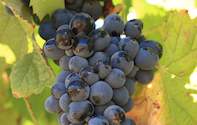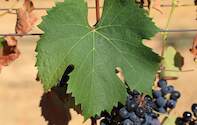Description
Nebbiolo is a red grape variety associated with some of the world’s best aged red wines.
It seems to have derived its name from the Italian word, nebula, meaning mist or fog, either because it ripens relatively late when the autumn mists starts to appear in Italy, or because of the white misty bloom that appears on the skin of the grapes when the berries are ripe. Nebbiolo seems to be an offspring of the Italian variety Freisa, but the identify of the other parent is still uncertain. It also seems to be a close cousin of Viognier.
Origins
According to DNA analysis, Nebbiolo most likely originated in Piedmont or the Valtellina zone in northwest Italy. It is one of the oldest varieties grown in Italy, with the mention of the variety being recorded in the State Archive of Torino around the middle of the thirteenth Century.
It is speculated that Nebbiolo is the same variety referred to as Spionia, by the Roman author, Pliney the Elder in his book Naturalis Historiae, back in 1 AD. Piedmont has over the years built a reputation for its Barolo and Barbaresco wine, which is exclusively made from Nebbiolo grapes cultivated in certain designated villages in the region.
During the 15th Century, Nebbiolo enjoyed such high esteem in the Barola villages, known as La Morra back then, that damage or the cutting down of one of these vines could be punished by the loss of right hand or even hanging. The Barola and Barbaresco, over the years, have been dubbed the “wine of kings and king of wines” in Italy. In the past, the wine has often been misunderstood when it is drunk too early. A good Barolo, however, has to be aged for at least twelve years to unlock its real potential.
It is also notoriously difficult to produce, with some people jesting that Nebbiolo production should only be attempted by wine makers who have mastered the art of producing the just as challenging variety, Pinot noir.

